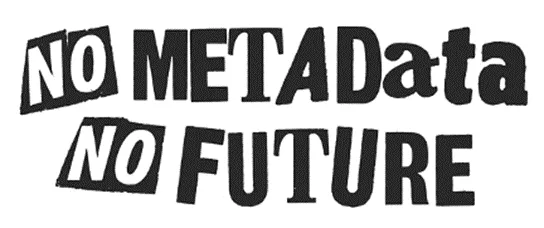FAIR
Findable
Metadata and identifiers The focus is often on creating rich digital documentation that comprises (3D and) 2D images, other graphical data, documents, drawings, audio files and more.
As well as good content we need high quality metadata:
- To allow users to find your content by searching for a variety of keywords, dates, subjects, creators, etc
- To enable preservation and reuse

Identifiers play an essential role: they need to be as unique and persistent as possible
Persistent Identifiers (PIDs) A unique URL which identifies your object, and is backed by a system and an organization who undertake to maintain the PID record, e.g. Digital Object Identifiers (DOI’s), Handle, ARK, or PURL
Accessible
Accessible: Storage and standards FAIR principles focus on where the data are stored (trustworthy), how they can be retrieved (protocols) and standards
Many organisations store their data on institutional repositories
There are also trusted national repositories for example in the Netherlands: https://dans.knaw.nl/en/data-services/data-vault/
International digital repositories - for example https://zenodo.org/
Data should be as standardised as possible to help management
As open as possible FAIR principle: “As open as possible as closed as necessary”
If users have to phone a librarian to ask for permission to access a copy of the data it is not open!
Users should be able to find the data online and quickly find out how to access it
Interoperable
Use metadata standards and vocabularies Metadata describe the digital data you created on digitising your cultural heritage asset. For example a description of the asset, the original and/or current location, when the asset was created and by whom. Of Course this is only relevant if you have that information.
Key concepts for cultural heritage metadata are: Project information – scope, goals, date, methods and techniques Cultural heritage – the object that has been captured Digital data – how the data was produced, digital object information, access to the data (including rights and licencing)
Vocabularies Printed vocabularies and wordlists are great for improving the consistency of your data but Linked (Open) Data is superior
For example, Getty’s Art and Architecture Thesaurus: Unique identifiers (UIDs) for each concept label Concept labels are available in multiple languages Broader and narrower concepts
For locations, you can use for example the standard vocabulary of Geonames.org.
See the Tools section for links.
Reusable
The focus of the FAIR principles is on being able to integrate another’s data into your own project and vice versa
Re-use means having access not only to the data, but also their documentation and the data being made available under a suitable licence.
Licencing Rights statements express the copyright status of a digital object and provide information about how someone can re-use the object. Standardised rights statements (for example from Creative Commons or RightsStatements.org) give information about rights in clear and simple language and are machine readable.
Publishing data with a standardised rights statement supports the FAIR principles See also Chapter 1 Planning of the project for more information about licensing and see the Tools section for a link.